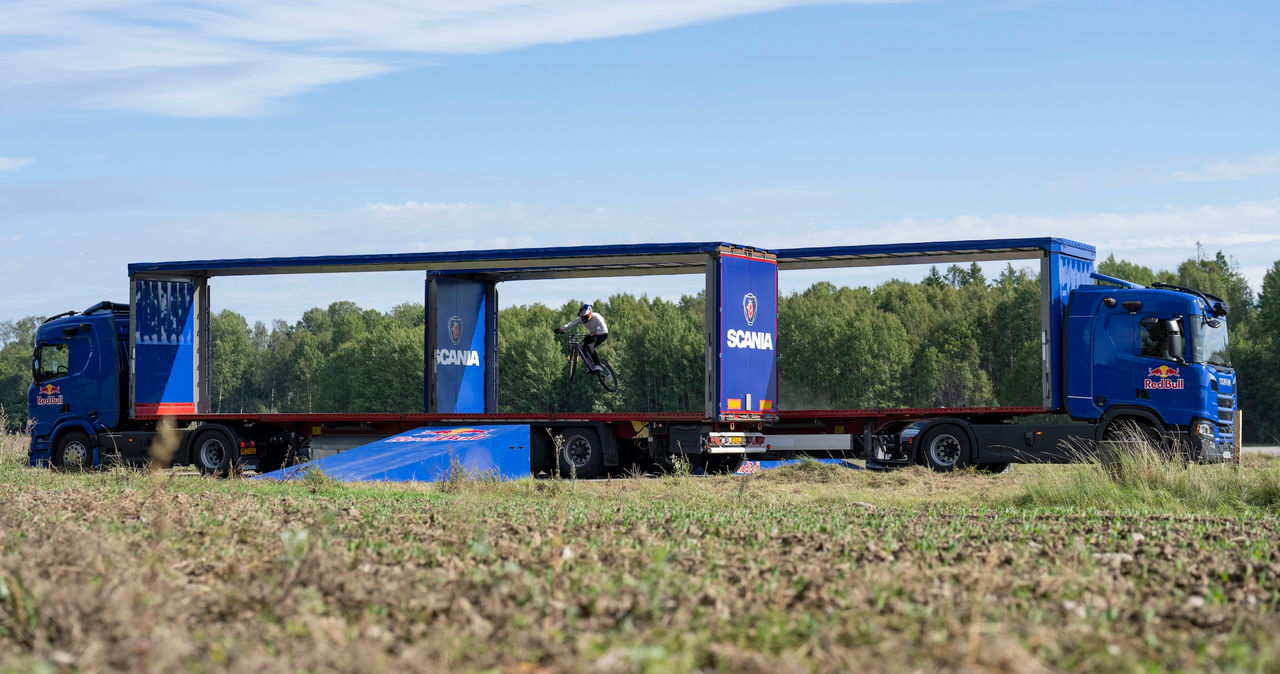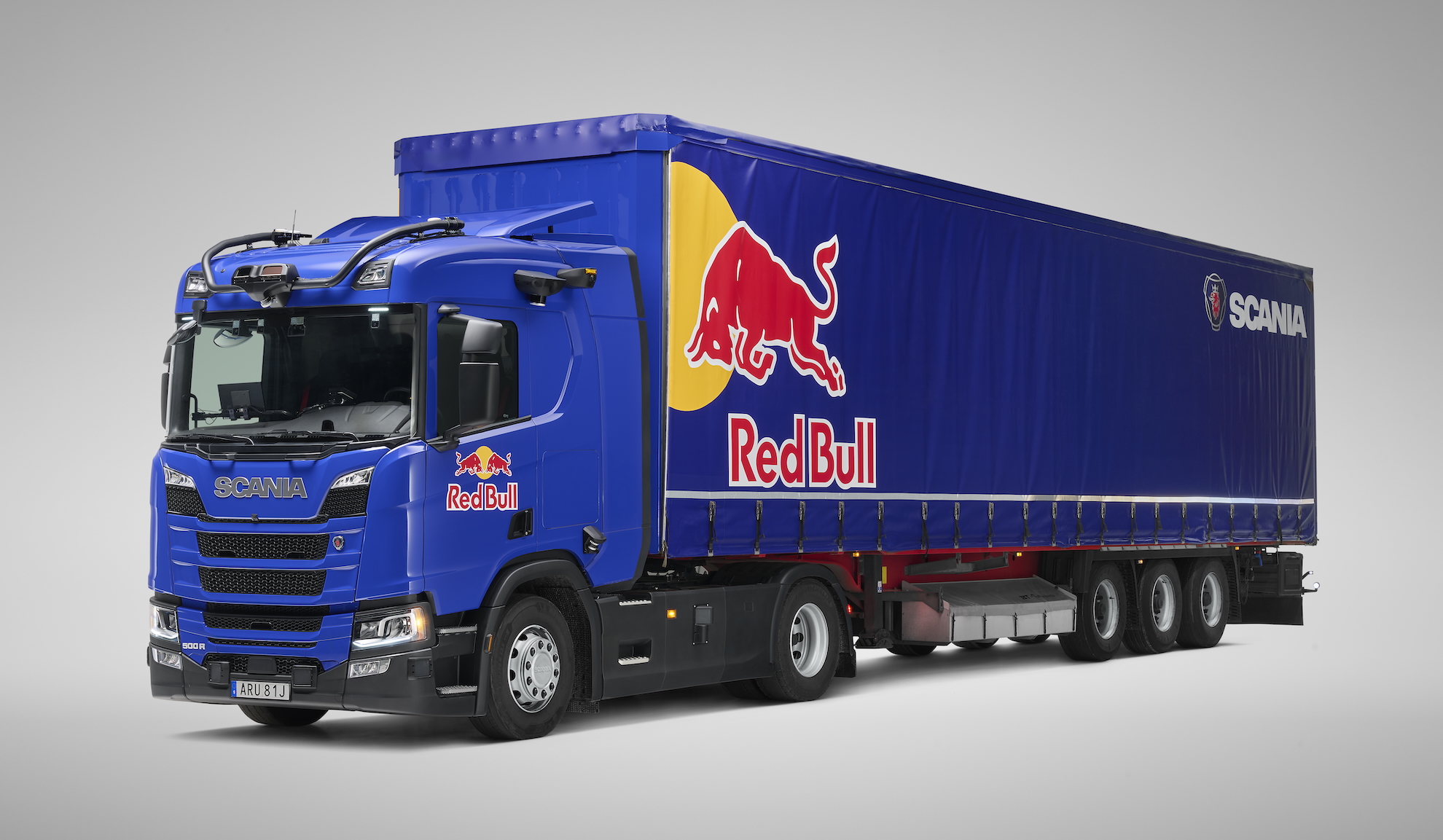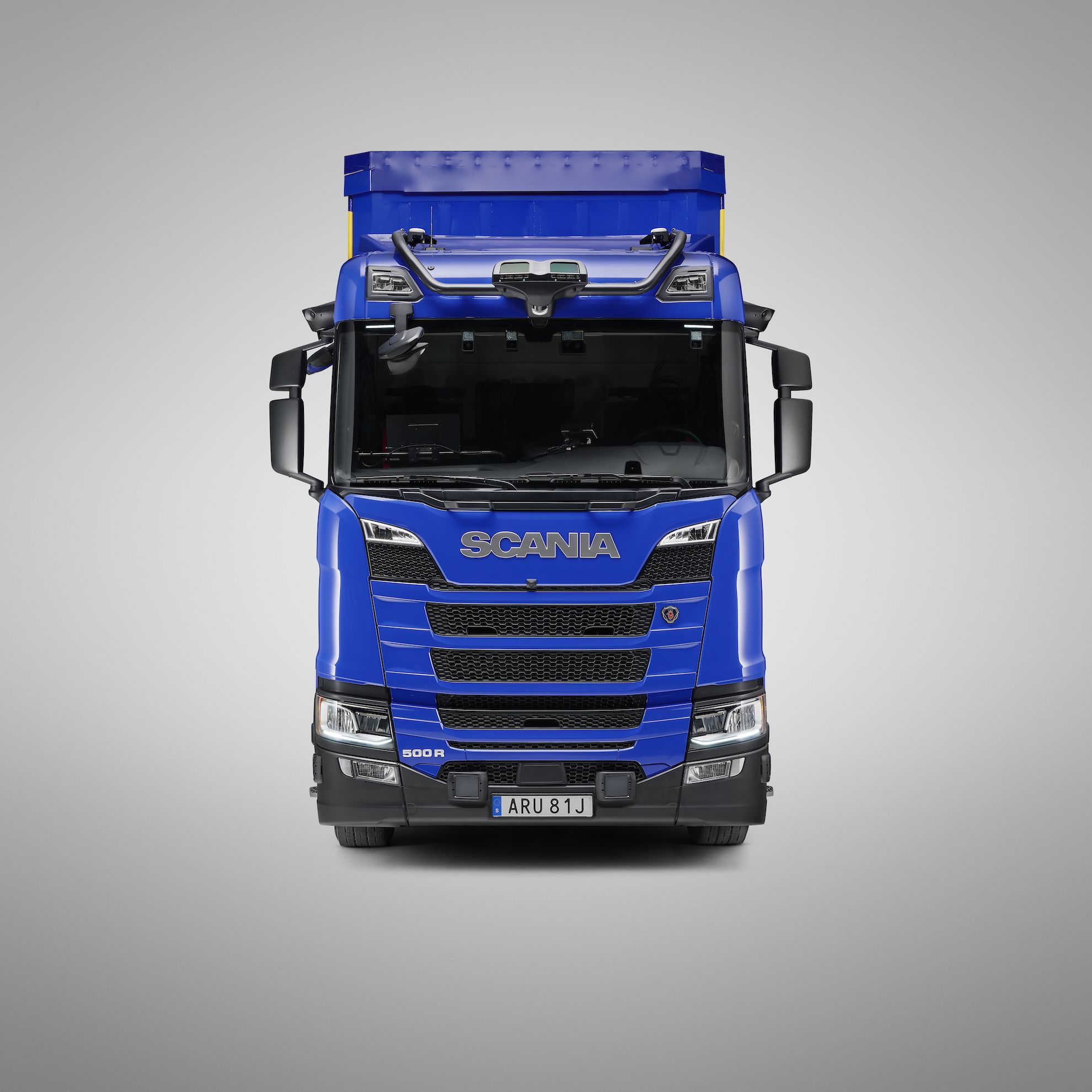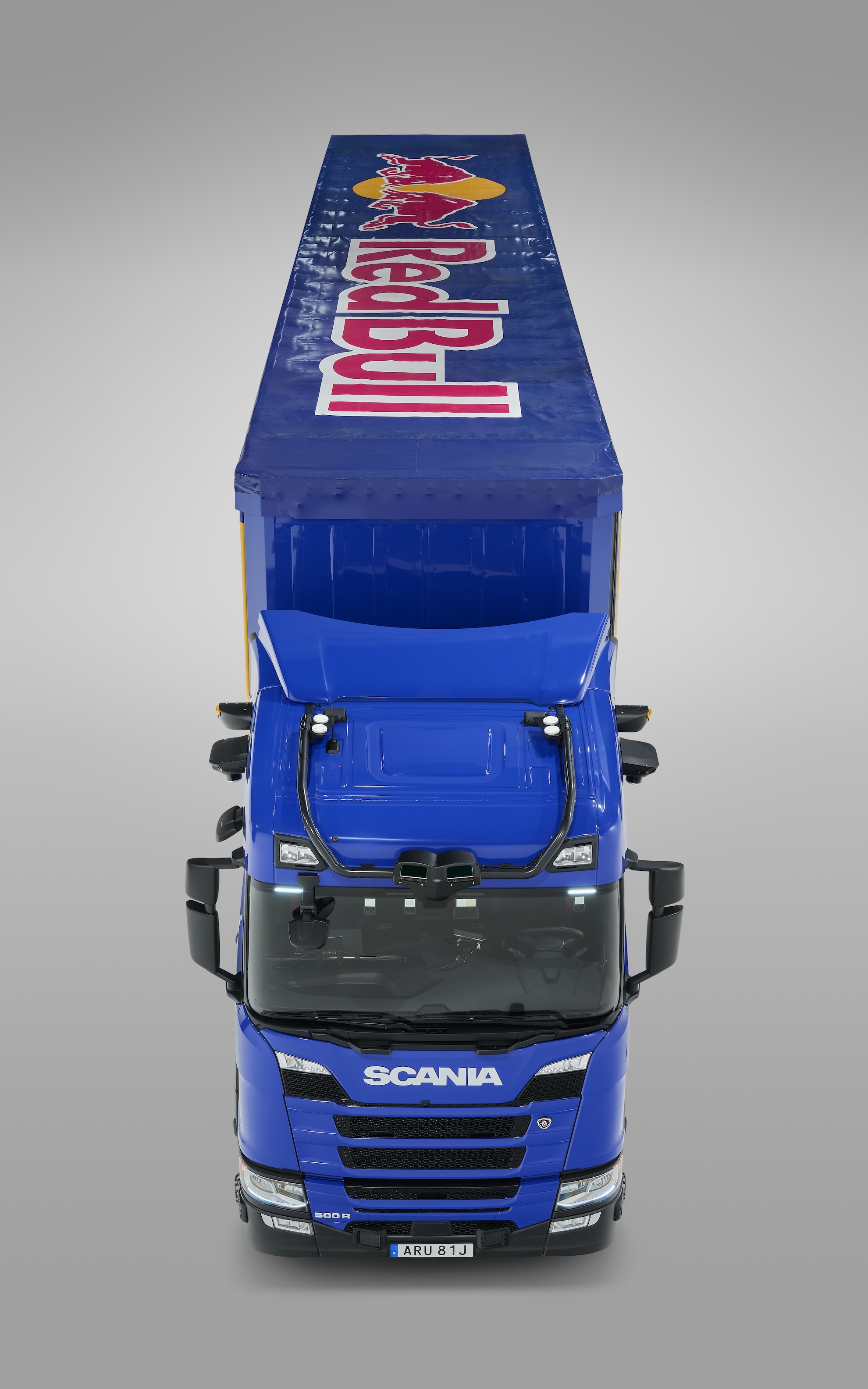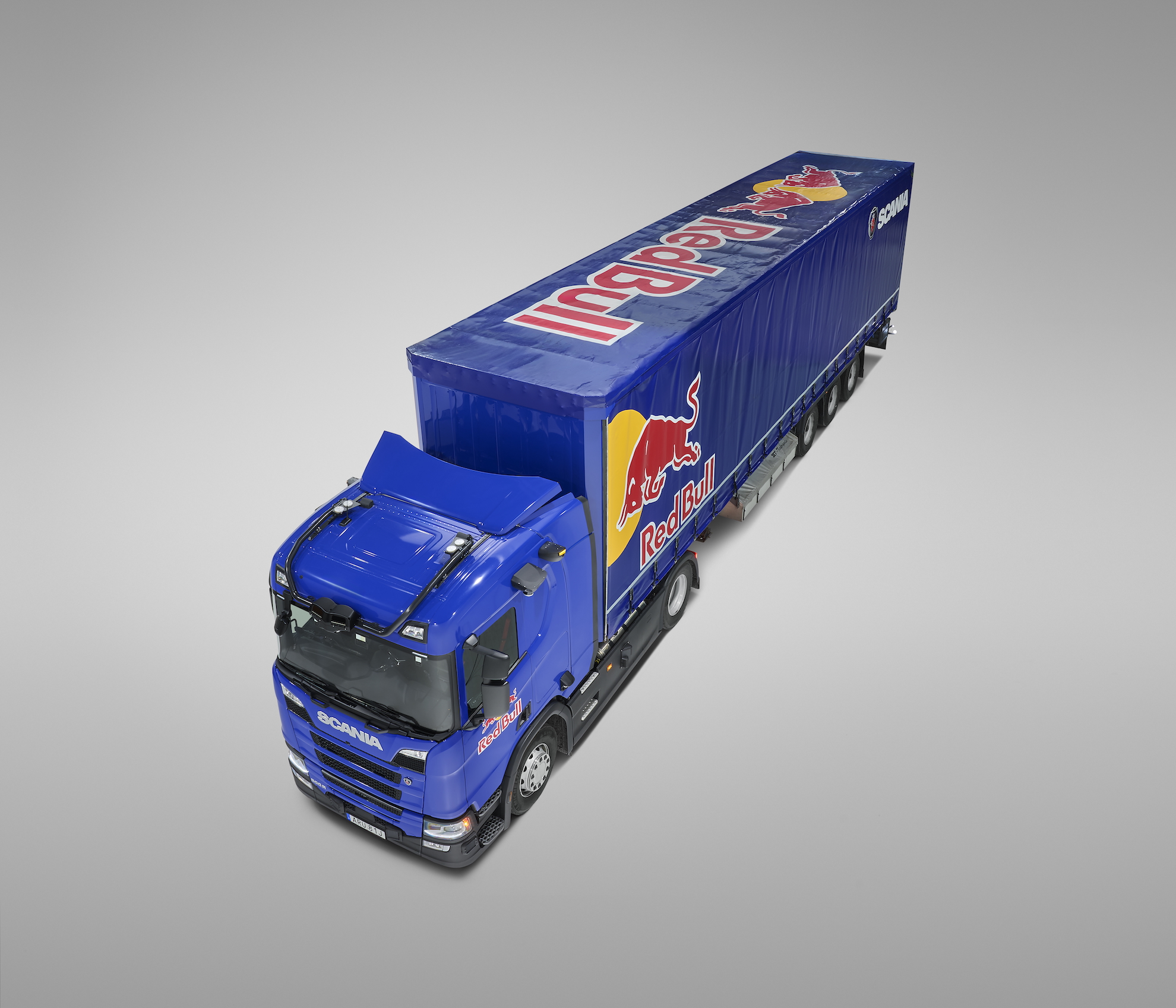
Autonomous transport solutions
Scania’s autonomous transport solutions are an important contribution to the transition towards safer, more efficient and sustainable transportation. Our solutions are being developed in cooperation with leading technology suppliers, with particular focus on mining and hub-to-hub logistics applications.
Autonomous Transport: essential for our future
The demand for autonomous solutions is increasing, and their commercialisation is expected to expand within the next few years. At Scania we are determined to be a significant contributor to the industry's transformation. We are driving the shift towards sustainable transport solutions, and autonomous transport is an essential part of our mission.
Our autonomous vehicles and software are already boosting industry safety, efficiency and sustainability, as well as addressing the global shortage of truck drivers.
Already today, Scania offer autonomous mining solutions in certain regions, where our driverless trucks powered by smart-programmed software are becoming a key part of safer and more sustainable operations.
Tests of autonomous hub-to-hub logistics transport with safety drivers on board are well underway on public roads in Europe. Within the coming years, driverless trucks will be transporting goods and cut traffic and emissions, improving air quality and increasing efficiency.
Autonomous, driverless transport is not light years away; it’s here today!
The benefits of autonomy and our roadmap ahead
Watch our Vice President and Head of Autonomous Solutions, Peter Hafmar, talk about Scania´s approach on autonomy as an important part of our mission – Driving the shift towards a sustainable transport system – and how we are at the forefront of innovation.
A very special challenge
We wanted to demonstrate just how safe, precise and aware our autonomous vehicle technology is. So, we came up with a bold idea to make the impossible possible, and put it to the test in a very special challenge.
We took two self-driving Scania trucks and programmed them precisely to drive past each other in opposite directions, creating a less than one-second window with centimetre precision when passing each other. We added the amazingly skilled professional mountain biker, Red Bull athlete Matt Jones. Then, with perfect timing as the trucks passed by each other, Matt rode his bike up and through the gap that they momentarily created. All with no humans in the truck and zero margin for error. Sounds impossible, right? Not at all. It was never in doubt.
Autonomous technology – and our skilled teams – enabled the feat
Thanks to our super-intelligent, precise and safe autonomous solutions we were able to create this ‘golden’ gap. To make it possible, we at Scania have been working closely with our partner PlusAI. Our teams, together with Red Bull and Matt Jones cooperated on it for months. Crunching the data. Testing over and over again. So when it was showtime, we were ready, and we knew it would work. Because that’s how precise and aware our autonomous technology is. Safe, consistent, and with flawless execution. This gives an indication of what we will be delivering in the next step for on-road autonomy: precision, safety, and reliability you can count on.
“This challenge was a glimpse of what’s possible when breakthrough autonomous technology delivers precision and safety you can count on”
– Peter Hafmar, Vice President & Head of Autonomous Solutions
Explore the epic Scania and Red Bull challenge
How Matt Jones launched his mountain bike through moving autonomous Scania trucks
“This project kind of lives or dies on autonomy, because it has to be so perfect and so precise,” says Matt Jones, Red Bull athlete and champion mountain biker.
Extreme challenge together with Red Bull athlete Matt Jones
Watch Red Bull athlete Matt Jones make an impossible jump possible, trusting completely in the precision of the Scania autonomous trucks.
Scania Autonomous trucks and Red Bull in extreme challenge together with athlete Matt Jones
Two self-driving Scania trucks and Red Bull athlete Matt Jones take on a challenge requiring extreme precision.
Scania Autonomous Solutions: “It’s not about getting it right; it’s about never getting it wrong”
A bold challenge like this needs careful planning. “Safety is everything,” says Peter Hafmar, Head of Autonomous Solutions.
How is extreme precision created by Scania self-driving trucks?
Autonomous Solutions Manager Daniel Frylmark has the answer for you.
Behind the scenes of the challenge in partnership with Red Bull athlete Matt Jones | Scania UK
Scania’s autonomous trucks: precision and safety in motion.
Discover Scania’s autonomous solutions for mining and hub-to-hub operations
In close cooperation with our customers and leading technology suppliers Scania is continuously developing autonomous transport solutions with particular focus on the mining and hub-to-hub segments.
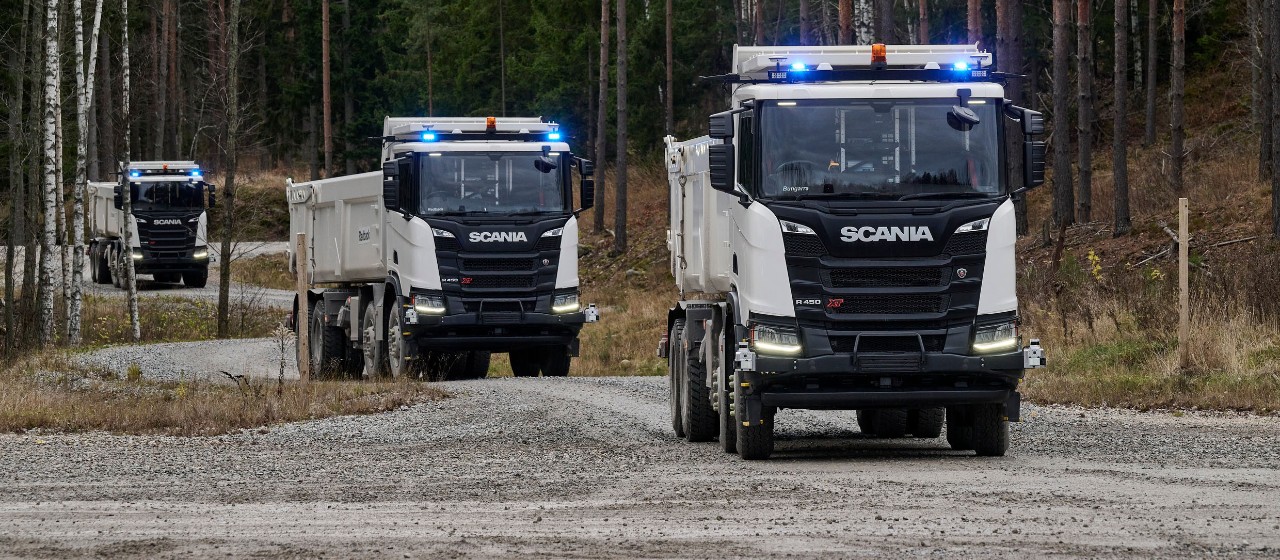
Autonomous mining transport solutions
Already today, Scania offers autonomous transport solutions that help mining operations run more safely and efficiently. By automating routine tasks and optimising vehicle performance, these solutions enable continuous operation, reduce downtime, and support a more resource-efficient future for mining.
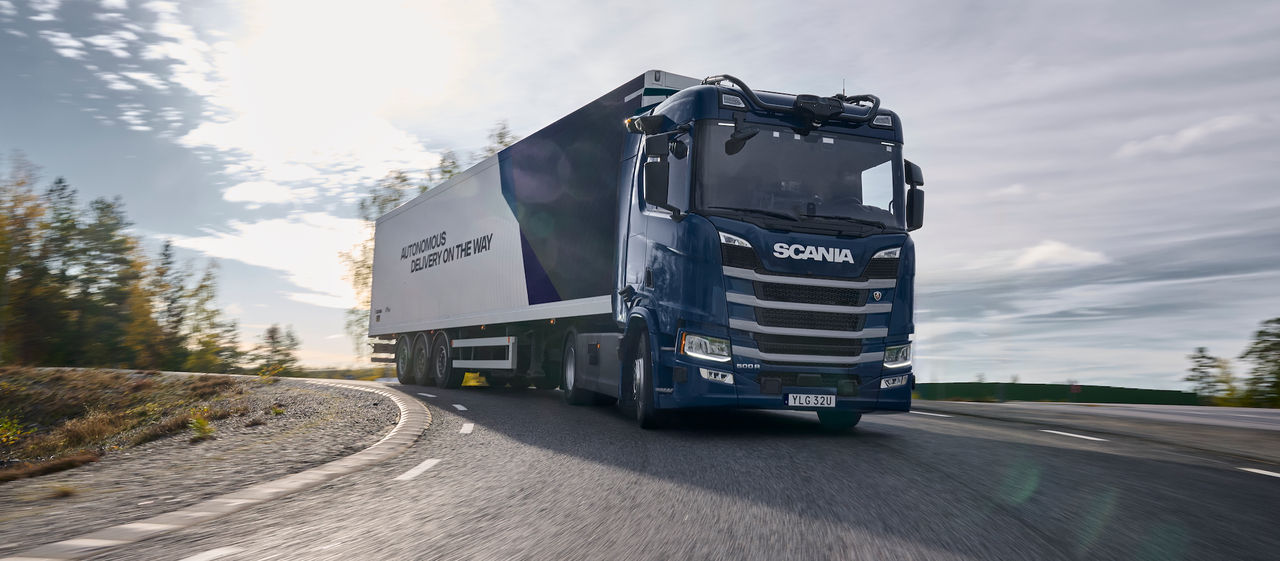
Autonomous hub-to-hub transport solutions
Scania is developing and piloting autonomous hub-to-hub transport solutions to streamline logistics, reduce operating costs, and improve transport precision. By automating repetitive routes between hubs, these solutions enable consistent, predictable, and more resource-efficient goods movement.
Scania autonomous trucks: FAQ
Explore Scania’s autonomous trucks and our ongoing development of autonomous transport solutions.
This FAQ outlines how the technology works, the challenges we are addressing, and the opportunities it creates for safer, more efficient and scalable transport operations.
Scania has started sales of driverless mining solutions, opening up for safer, more efficient and more sustainable mining operations. The solution has been developed in close collaboration with customers, and we will be deploying full scale driverless operations during 2026.
For on road, hub-to-hub transportation, we will be expanding our program of safety driver supported autonomous operations during the coming years. We are working closely with customers and operations partners to prepare for driverless operations and understand the needs and the value that we can create for our customers. Full scale driverless hub-to-hub operations are expected to be realized in Europe around 2030.
Autonomous trucks have the potential to be safer than regular trucks. Some of the benefits of autonomous trucks include the elimination of human errors, such as fatigue, distraction and substance abuse, which are common causes of accidents.
Autonomous trucks have advanced sensors and machine learning algorithms that enables the highest level of safety both in enclosed environments like mines, and on-road. We also have robust processes and verification systems to ensure that our software and hardware are up to date and maintains the highest level of safety and reliability.
Our autonomous mining trucks have been extensively tested and validated to ensure they operate safely under real-world conditions.
Autonomous on-road trucks can detect potential hazards and respond quickly, more accurately than humans. However, like any new technology, there may be unforeseen problems that could cause accidents. Therefore, with safety as our main priority, we will continue use safety drivers until the system is able to handle all situations that it encounters before we go fully driverless.
AI is becoming an increasingly important part of modern society in many different sectors, including the transport industry. However, the shift to autonomous transport will not happen overnight. Also, in several parts of the world, including Europe, there is a significant driver shortage, causing delays in shipments and rising transportation costs. This trend is expected to increase over the foreseeable future and therefore we will rather see autonomous trucks countering the growing shortage of drivers worldwide on a short-to mid-term basis.
Yes, in principle as long as the road fulfils the preconditions and limitations stipulated by the responsible authority. But to actually start operations requires careful planning. Before we open up for autonomous trucks, the route must be surveyed in detail and additional testing on the specific road might be needed.
In 2024, Scania started sales of autonomous mining trucks, opening up for safer, more efficient and more sustainable mining operations.
Together with Australian mining group Rio Tinto, we have been testing self-driving trucks since 2018. In April 2022 we launched new trials in Rio Tinto's Channar mine on our 40-tonne-payload autonomous mining trucks and quickly reached a key milestone of driverless operation in a typical load and haul cycle environment.
In the hub-to-hub segment, in February 2021, Scania was the first European OEM to operate an L4 vehicle on public roads in Sweden, and since May 2022, we are granted permission from the Swedish transport authority to expand our testing route for autonomous driving.
In September 2022, Scania and transport company HAVI launched the first European pilot of fully autonomous vehicles carrying commercial goods on public roads.
For the mining segment, we will be deploying full scale driverless operations during 2026, as we are finalizing our trials in western Australia with our customer Rio Tinto.
We are also partnering with Australian mining services provider Regroup to launch our first fleet of autonomous in-pit mining trucks in commercial operations. These autonomous rigid G 560 8x4 tippers will begin operations during 2026, marking a milestone for Scania and Regroup, and for the global mining industry.
Over the coming years, Scania´s autonomous mining offer will gradually expand to a wider geographical area. We also have high ambitions for the hub-to-hub segment and we will continue to focus on technology development together with our partners, as well as running commercial pilots together with customers to get a good understanding of their needs.
For hub-to-hub transport, autonomous driving without a safety driver on public roads requires proving to traffic authorities that it is safe. The best way to do this is still undecided and will likely involve driving many kilometres to demonstrate the system's ability to handle all situations. There is yet no consensus or EU-wide legislation on the requirements.
Efficient infrastructure is crucial for us and the industry as a whole and we want to keep the infrastructure requirements to an absolute minimum. Expensive upgrades often burden stakeholders with no direct benefit and can complicate safety measures.
Our vehicles operate without external help, apart from reliable GPS and a low-band cellular connection for commands and reporting. Our customers will only need minor adjustments to arrival areas and IT equipment for vehicle management.
This depends a lot on the development of technical capabilities, but experts within our parent company TRATON have estimated that in 2026, 78 billion km’s of road transport will be suitable and addressable for autonomous driving.
This kind of calculation is quite difficult to make. Autonomous transport is less about the truck and more about the system in which it is being used. The main benefit with autonomy is that you are no longer trying to optimise the utilisation based on the driver. These vehicles can operate 24/7 without breaks if the logistics planning allows for that, which opens up for an increase in productivity without creating a disproportionate extra cost.
In addition, autonomous trucks can travel at a constant speed and optimize their routes, which reduces fuel consumption and emissions. With real-time traffic data, they can also navigate to avoid congestion and minimise the time spent idling in traffic.
We are working with the authorities to understand how the liability will be handled.
The liability is likely to be split a few ways, to the ground operator in preparing the vehicle for departure, to the control room who is monitoring the transport, and of course to us as the “driver” of the vehicle.
Yes, the vehicles cost more, approximately 1,5-2 times the price of a traditional vehicle. And there are additional operational costs with software licenses and the extra manpower to manage and monitor the vehicles. But with the driver today being a significant cost and productivity restriction, there is still a compelling business case. The additional costs are either fixed or scale very well, so the best case for autonomous driving is when it is done at scale and with high vehicle utilisation.
Latest news in autonomous transport solutions
Thinking about going autonomous?
Do you want more information about our autonomous transport solutions, or have specific questions? Share your contact details and we will contact you to discuss the right solution for your business.
